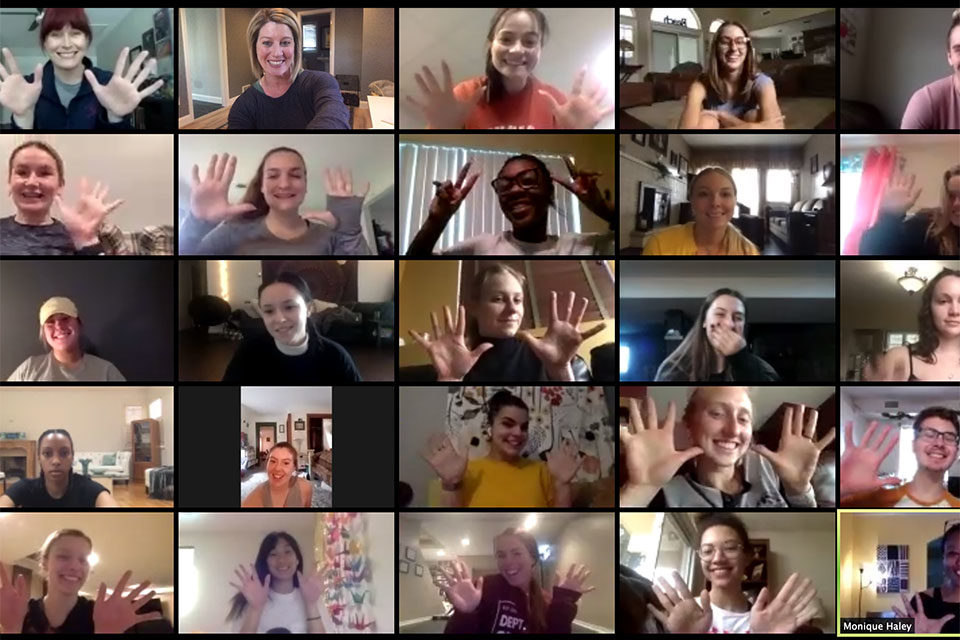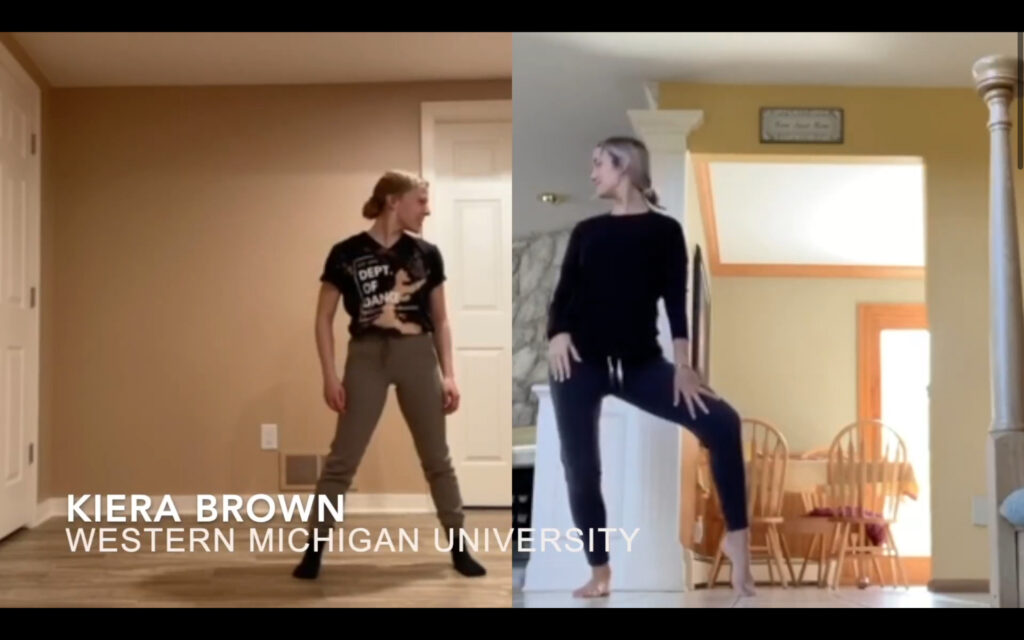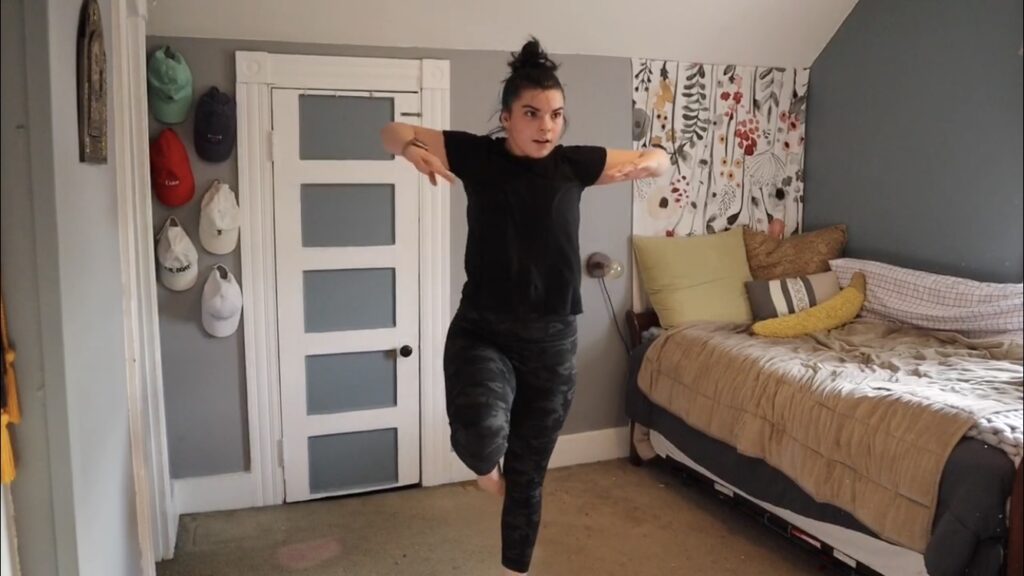Dancers from Salve, SMU, WMU create collaborative jazz dance project

When the pandemic hit, the biggest thing on many artists’ minds in the Department of Music, Theater and Dance was the harsh reality that while much of art is physical and collaborative in nature, a big challenge was going to be how to recreate that physicality and collaboration while remote. And this remains a question that many artists continue to ask as the world moves into the 2020-21 academic semester — a semester of unknowns concerning how the coronavirus will play out in the fall.
But Lindsay Guarino, associate professor of dance at Salve Regina, points to the success that her dancers achieved during the initial quarantine in the spring of 2020 to offer hope that something can truly come out of such enormous remote challenges for artists — especially dancers.
Salve Regina’s dancers, along with dancers from Southern Methodist University and Western Michigan University, were able to create a dynamic collaborative dance project called “Collective Groove.”
Watch the “Collective Groove” dance project
“For us, it came out of an urgency for community, one of the Africanist cultural values of jazz that we are deeply committed to in our practices,” said Guarino. Guarino had connected with Brandi Coleman, assistant professor of jazz dance at Southern Methodist University, and Monique Haley, assistant professor of dance at Western Michigan University, at previous jazz conferences, and they all shared values as to making jazz the basis of their dance programs.
As soon as the pandemic hit, the three professors reached out and began to Zoom with each other in the spirit of jazz, according to Coleman. “One of the foundational philosophies in jazz is community — and especially about honoring the individual within the community,” Coleman explained. “’As we are seeking to create meaningful communal experiences, how can we use this as an opportunity to collaborate with our respective universities in ways that we may not be able to do under normal circumstances?'”
The three professors were inspired by a video called “Exquisite Corps” by Mitchell Rose. “He had a large group of some of the most well-known contemporary dance artists today create something that’s kind of like a visual chain letter where one artists starts, and then the next adds on, and then the next and the next,” described Guarino.
The idea to create a dance collaboration across three different universities was set into motion. Thirty one students (eight from Salve Regina) participated in an introductory Zoom video call to go through the idea, and then everyone was assigned to video themselves doing dance moves. Each dancer was to perform a call and response, which is very important to jazz dance, where a dancer will express themselves and then another dancer responds to that expression with their own creative dance.

Screenshot of a moment in the “Collective Groove” video where a jazz call and response is exchanged between dancers. Michaela Darraugh ’20 from Salve Regina is pictured on the right.
“It somehow worked,” said Guarino. “The product is super fun and entertaining, and I love seeing the product. But for me it was all about the process — and seeing the way they were handling the jazz process with a respect for the African American roots and also a maturity and nuance that was taking the best of what they were learning at the studio and translating it into this remote virtual learning.”
The project had to be filmed sequentially, and every student played off of each other’s ideas as the video chain progressed. They used the Band app to collect all of their videos. Once the filming was done, Rose Bogardus ’22 of Salve Regina was tasked with putting the finishing touches on the project.
“My role in this was to take all the videos sent in from everybody and edit them into one video,” Bogardus described. “I had guidelines and had some suggestions, but I had a lot of room to play around with the kinds of edits I used on it. I primarily used iMovie to create the video.”
Bogardus said that it was an incredible experience to work on the project with Colemen and Haley, since both are very respected in the jazz dance world. The project also helped her cope with the stress of the pandemic when it initially hit the U.S.
“This project has taught me that nothing can stop the dance community from doing what they love,” she said. “Dance to me is all about connecting with others and expressing yourself. Even though we weren’t able to be with each other in real life, we are still able to connect with each other virtually. The dance, and really all of the art, community is so strong and can convey so many feelings and messages to everyone.”
No matter what, artists will still create — and dancers will still dance, according to Bogardus. She has hope that no matter what, she can still do what she loves and that difficulties can be redeemed. It’s a lesson that extends beyond dance to every area of life.
“2020 has been such a hurting, confusing, but empowering year,” she said. “So many things have come out of the things you see on the news and real life and are changing for the better.”
Featured Photo from the “Collective Groove” meet and greet over Zoom that was held initially with all three faculty members (Guarino, Coleman at SMU, and Haley at WMU) and thirty one students total (eight from Salve).


